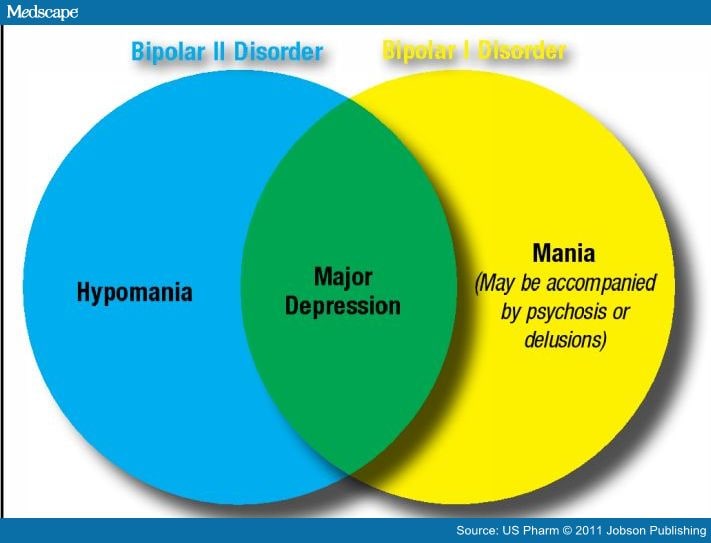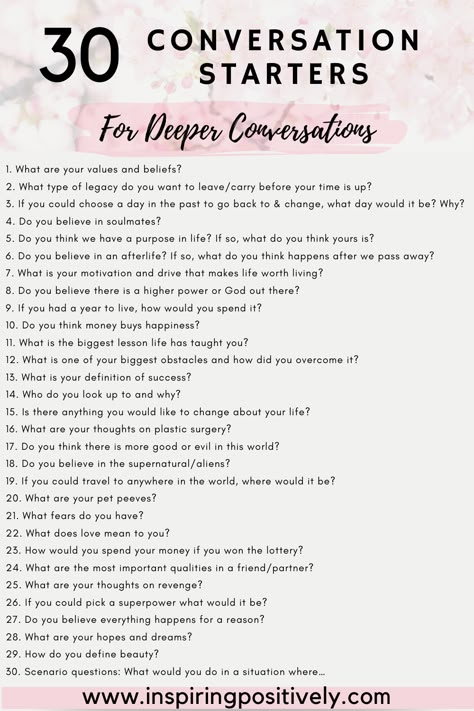Does meditation actually work
7 Ways Meditation Can Actually Change The Brain
The meditation-and-the-brain research has been rolling in steadily for a number of years now, with new studies coming out just about every week to illustrate some new benefit of meditation. Or, rather, some ancient benefit that is just now being confirmed with fMRI or EEG. The practice appears to have an amazing variety of neurological benefits – from changes in grey matter volume to reduced activity in the “me” centers of the brain to enhanced connectivity between brain regions. Below are some of the most exciting studies to come out in the last few years and show that meditation really does produce measurable changes in our most important organ. Skeptics, of course, may ask what good are a few brain changes if the psychological effects aren’t simultaneously being illustrated? Luckily, there’s good evidence for those as well, with studies reporting that meditation helps relieve our subjective levels of anxiety and depression, and improve attention, concentration, and overall psychological well-being.
Meditation Helps Preserve the Aging Brain
Last week, a study from UCLA found that long-term meditators had better-preserved brains than non-meditators as they aged. Participants who’d been meditating for an average of 20 years had more grey matter volume throughout the brain — although older meditators still had some volume loss compared to younger meditators, it wasn’t as pronounced as the non-meditators. "We expected rather small and distinct effects located in some of the regions that had previously been associated with meditating," said study author Florian Kurth. "Instead, what we actually observed was a widespread effect of meditation that encompassed regions throughout the entire brain."
Meditation Reduces Activity in the Brain’s “Me Center"
One of the most interesting studies in the last few years, carried out at Yale University, found that mindfulness meditation decreases activity in the default mode network (DMN), the brain network responsible for mind-wandering and self-referential thoughts – a. k.a., “monkey mind.” The DMN is “on” or active when we’re not thinking about anything in particular, when our minds are just wandering from thought to thought. Since mind-wandering is typically associated with being less happy, ruminating, and worrying about the past and future, it’s the goal for many people to dial it down. Several studies have shown that meditation, through its quieting effect on the DMN, appears to do just this. And even when the mind does start to wander, because of the new connections that form, meditators are better at snapping back out of it.
k.a., “monkey mind.” The DMN is “on” or active when we’re not thinking about anything in particular, when our minds are just wandering from thought to thought. Since mind-wandering is typically associated with being less happy, ruminating, and worrying about the past and future, it’s the goal for many people to dial it down. Several studies have shown that meditation, through its quieting effect on the DMN, appears to do just this. And even when the mind does start to wander, because of the new connections that form, meditators are better at snapping back out of it.
Its Effects Rival Antidepressants for Depression, Anxiety
A review study last year at Johns Hopkins looked at the relationship between mindfulness meditation and its ability to reduce symptoms of depression, anxiety, and pain. Researcher Madhav Goyal and his team found that the effect size of meditation was moderate, at 0.3. If this sounds low, keep in mind that the effect size for antidepressants is also 0. 3, which makes the effect of meditation sound pretty good. Meditation is, after all an active form of brain training. “A lot of people have this idea that meditation means sitting down and doing nothing,” says Goyal. “But that’s not true. Meditation is an active training of the mind to increase awareness, and different meditation programs approach this in different ways.” Meditation isn’t a magic bullet for depression, as no treatment is, but it’s one of the tools that may help manage symptoms.
3, which makes the effect of meditation sound pretty good. Meditation is, after all an active form of brain training. “A lot of people have this idea that meditation means sitting down and doing nothing,” says Goyal. “But that’s not true. Meditation is an active training of the mind to increase awareness, and different meditation programs approach this in different ways.” Meditation isn’t a magic bullet for depression, as no treatment is, but it’s one of the tools that may help manage symptoms.
Meditation May Lead to Volume Changes in Key Areas of the Brain
In 2011, Sara Lazar and her team at Harvard found that mindfulness meditation can actually change the structure of the brain: Eight weeks of Mindfulness-Based Stress Reduction (MBSR) was found to increase cortical thickness in the hippocampus, which governs learning and memory, and in certain areas of the brain that play roles in emotion regulation and self-referential processing. There were also decreases in brain cell volume in the amygdala, which is responsible for fear, anxiety, and stress – and these changes matched the participants’ self-reports of their stress levels, indicating that meditation not only changes the brain, but it changes our subjective perception and feelings as well. In fact, a follow-up study by Lazar’s team found that after meditation training, changes in brain areas linked to mood and arousal were also linked to improvements in how participants said they felt — i.e., their psychological well-being. So for anyone who says that activated blobs in the brain don’t necessarily mean anything, our subjective experience – improved mood and well-being – does indeed seem to be shifted through meditation as well.
There were also decreases in brain cell volume in the amygdala, which is responsible for fear, anxiety, and stress – and these changes matched the participants’ self-reports of their stress levels, indicating that meditation not only changes the brain, but it changes our subjective perception and feelings as well. In fact, a follow-up study by Lazar’s team found that after meditation training, changes in brain areas linked to mood and arousal were also linked to improvements in how participants said they felt — i.e., their psychological well-being. So for anyone who says that activated blobs in the brain don’t necessarily mean anything, our subjective experience – improved mood and well-being – does indeed seem to be shifted through meditation as well.
Just a Few Days of Training Improves Concentration and Attention
Having problems concentrating isn’t just a kid thing – it affects millions of grown-ups as well, with an ADD diagnosis or not. Interestingly but not surprisingly, one of the central benefits of meditation is that it improves attention and concentration: One recent study found that just a couple of weeks of meditation training helped people’s focus and memory during the verbal reasoning section of the GRE. In fact, the increase in score was equivalent to 16 percentile points, which is nothing to sneeze at. Since the strong focus of attention (on an object, idea, or activity) is one of the central aims of meditation, it’s not so surprising that meditation should help people’s cognitive skills on the job, too – but it’s nice to have science confirm it. And everyone can use a little extra assistance on standardized tests.
In fact, the increase in score was equivalent to 16 percentile points, which is nothing to sneeze at. Since the strong focus of attention (on an object, idea, or activity) is one of the central aims of meditation, it’s not so surprising that meditation should help people’s cognitive skills on the job, too – but it’s nice to have science confirm it. And everyone can use a little extra assistance on standardized tests.
Meditation Reduces Anxiety — and Social Anxiety
A lot of people start meditating for its benefits in stress reduction, and there’s lots of good evidence to support this rationale. There’s a whole newer sub-genre of meditation, mentioned earlier, called Mindfulness-Based Stress Reduction (MBSR), developed by Jon Kabat-Zinn at the University of Massachusetts’ Center for Mindfulness (now available all over the country), that aims to reduce a person’s stress level, physically and mentally. Studies have shown its benefits in reducing anxiety, even years after the initial 8-week course. Research has also shown that mindfulness meditation, in contrast to attending to the breath only, can reduce anxiety – and that these changes seem to be mediated through the brain regions associated with those self-referential (“me-centered”) thoughts. Mindfulness meditation has also been shown to help people with social anxiety disorder: a Stanford University team found that MBSR brought about changes in brain regions involved in attention, as well as relief from symptoms of social anxiety.
Research has also shown that mindfulness meditation, in contrast to attending to the breath only, can reduce anxiety – and that these changes seem to be mediated through the brain regions associated with those self-referential (“me-centered”) thoughts. Mindfulness meditation has also been shown to help people with social anxiety disorder: a Stanford University team found that MBSR brought about changes in brain regions involved in attention, as well as relief from symptoms of social anxiety.
Meditation Can Help with Addiction
A growing number of studies has shown that, given its effects on the self-control regions of the brain, meditation can be very effective in helping people recover from various types of addiction. One study, for example, pitted mindfulness training against the American Lung Association's freedom from smoking (FFS) program, and found that people who learned mindfulness were many times more likely to have quit smoking by the end of the training, and at 17 weeks follow-up, than those in the conventional treatment.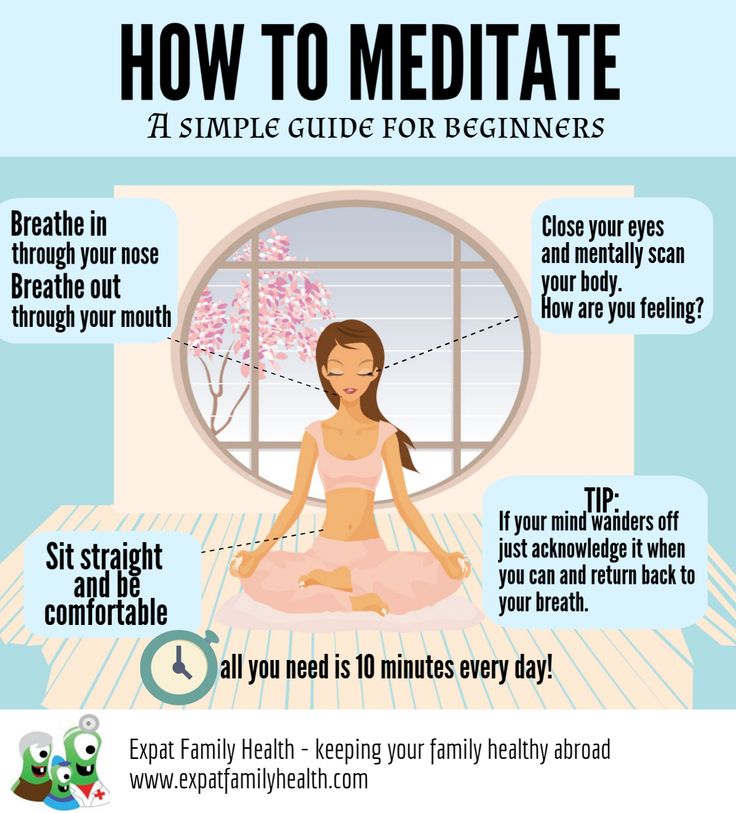 This may be because meditation helps people “decouple” the state of craving from the act of smoking, so the one doesn’t always have to lead to the other, but rather you fully experience and ride out the “wave” of craving, until it passes. Other research has found that mindfulness training, mindfulness-based cognitive therapy (MBCT), and mindfulness-based relapse prevention (MBRP) can be helpful in treating other forms of addiction.
This may be because meditation helps people “decouple” the state of craving from the act of smoking, so the one doesn’t always have to lead to the other, but rather you fully experience and ride out the “wave” of craving, until it passes. Other research has found that mindfulness training, mindfulness-based cognitive therapy (MBCT), and mindfulness-based relapse prevention (MBRP) can be helpful in treating other forms of addiction.
Short Meditation Breaks Can Help Kids in School
For developing brains, meditation has as much as or perhaps even more promise than it has for adults. There’s been increasing interest from educators and researchers in bringing meditation and yoga to school kids, who are dealing with the usual stressors inside school, and oftentimes additional stress and trauma outside school. Some schools have starting implementing meditation into their daily schedules, and with good effect: One district in San Francisco started a twice daily meditation program in some of its high-risk schools – and saw suspensions decrease, and GPAs and attendance increase. Studies have confirmed the cognitive and emotional benefits of meditation for schoolchildren, but more work will probably need to be done before it gains more widespread acceptance.
Studies have confirmed the cognitive and emotional benefits of meditation for schoolchildren, but more work will probably need to be done before it gains more widespread acceptance.
Worth a Try?
Meditation is not a panacea, but there’s certainly a lot of evidence that it may do some good for those who practice it regularly. Everyone from Anderson Cooper and congressman Tim Ryan to companies like Google and Apple and Target are integrating meditation into their schedules. And its benefits seem to be felt after a relatively short amount of practice. Some researchers have cautioned that meditation can lead to ill effects under certain circumstances (known as the “dark night” phenomenon), but for most people – especially if you have a good teacher – meditation is beneficial, rather than harmful. It’s certainly worth a shot: If you have a few minutes in the morning or evening (or both), rather than turning on your phone or going online, see what happens if you try quieting down your mind, or at least paying attention to your thoughts and letting them go without reacting to them. If the research is right, just a few minutes of meditation may make a big difference.
If the research is right, just a few minutes of meditation may make a big difference.
WATCH: Some Of The Most Exciting Discoveries To Come Out Of Brain Research
Mindfulness may have been over-hyped
Loading
Psychology
Mindfulness may have been over-hyped
(Image credit: Getty Images)
By Bruce Lieberman7th May 2018
Mindfulness meditation has been practiced for millennia – and today is a billion-dollar business. But how much does the practice really change our health?
I
In late 1971, US Navy veteran Stephen Islas returned from Vietnam, but the war continued to rage in his head. “I came very close to committing suicide when I came home, I was that emotionally and mentally damaged,” Islas remembers. At his college campus in Los Angeles, a friend suggested he check out a meditation class. He was sceptical, but he found that before long “there were moments that started shifting, where I was happy. I would experience these glimpses of calmness.”
I would experience these glimpses of calmness.”
Forty-six years later, Islas says that he has never completely freed himself from his post-traumatic stress disorder (PTSD), which was formally diagnosed in 2000 at the Veterans Affairs (VA) West Los Angeles Medical Center. But he’s convinced that meditation has saved his life.
Various forms of meditation are now routinely offered to veterans with PTSD. It’s also touted as a therapeutic tool to help anyone suffering from conditions and disorders including stress, anxiety, depression, addiction and chronic pain. More broadly, meditation has come into vogue as a way to enhance human performance, finding its way into classrooms, businesses, sports locker rooms and people’s smartphones through Internet apps like Headspace and Calm.
You might also like:
• Can meditation prevent the effects of ageing?
• An effortless way to improve your memory
• Why it pays to be grumpy and bad-tempered
‘Mindfulness’ meditation, a type of meditation that focuses the mind on the present moment, is wildly popular. It has even become a billion-dollar business.
It has even become a billion-dollar business.
For all its popularity, however, it’s still unclear exactly what mindfulness meditation does to the human brain, how it influences health and to what extent it helps people suffering from physical and mental challenges. Meditation has been practiced for thousands of years, but psychologists and neuroscientists have studied it for only a few decades.
Meditation even has been introduced to combat stress among police women in Punjab, India (Credit: Getty Images)
Some studies suggest that meditation can help people relax, manage chronic stress and even reduce reliance on pain medication. Some of the most impressive studies to date involve a treatment called mindfulness-based cognitive therapy, which combines meditation with psychotherapy to help patients deal with thoughts that lead to depression.
Randomised controlled trials have shown that the approach significantly reduces the risk of depression relapse in individuals who have previously had three or more major depressive episodes.
But many other studies on the effects of meditation have used only small numbers of subjects, lacked follow-up and generally been less scientifically rigorous than other medical studies – clinical trials for new drugs, for example.
A 2017 article that assessed evidence on meditation as a treatment for PTSD summed up the overall state of affairs: “This line of research is in its relative infancy.”
Despite its popularity, there has been relatively little rigorous study into the supposed benefits of meditation (Credit: Getty Images)
While questions about the clinical outcomes of meditation persist, other studies have focused on a more fundamental issue: does meditation physically change the brain? It’s a tough question to answer, but as brain imaging techniques have advanced and meditation interventions have grown more popular, scientists have begun to take a systematic look at what’s going on.
Seeking stillness
Meditation that requires one to sit still and focus on the mere act of breathing can encourage mindfulness, says psychologist David Creswell, who directs the Health and Human Performance Laboratory at Carnegie Mellon University in Pittsburgh.
But most people spend most or all of their day being anything but mindful. They skip from one thought to another. They daydream. They ruminate about the past, and they worry about the future. They self-analyse and self-criticise.
Rather than being mindful, most of us spend most of our day skipping from one thought to the next (Credit: Nappy.co)
In a 2010 study, Harvard researchers asked 2,250 adults about their thoughts and actions at moments throughout their day via an iPhone app. People’s minds wandered 47% of the time and mind wandering often triggered unhappiness, the scientists reported in Science.
“In contrast, the capacity to be mindful is associated with higher well-being in daily life,” Creswell wrote in the 2017 Annual Review of Psychology. He cites a 2003 study showing a correlation between mindfulness and a number of indicators of well-being.
One study finds that the more mindfulness we practice, the better we feel (Credit: Getty Images)
When people who meditate say they are paying attention to the present moment, they may be focused on their breathing, but maybe also on an emotion that surfaces and then passes, a mental image, inner chatter or a sensation in the body. “Adopting an attitude of openness and acceptance toward one’s experience is critical” to becoming more mindful, Creswell says. The idea is to be view these moments with a detached and non-judgmental curiosity.
“Adopting an attitude of openness and acceptance toward one’s experience is critical” to becoming more mindful, Creswell says. The idea is to be view these moments with a detached and non-judgmental curiosity.
Creswell first became interested in mindfulness meditation when he took courses on psychology and Buddhism in high school. Later, in graduate school, he began studying meditation in connection with reducing stress and improving overall health.
“As a scientist, I’m never convinced. I’ve been trained to be sceptical,” Creswell says. “Nonetheless, I do think that there were a number of experiences I had while on meditation retreats that really struck me as very foundational.”
Even the simple but challenging act of sitting still for an hour while meditating made a great impact on Creswell. “Having this disconnect between my body feeling in pain but my mind being completely silent and open… these were very powerful insights for me about how a [meditation] practice could really change people’s lives, or fundamentally change how they relate to suffering in their lives,” he says. “There wasn’t a bolt-of-lightning moment for me, but a lot of these moments of insight in my own retreat experiences that suggested to me that it was worth spending time and effort to do the science.”
“There wasn’t a bolt-of-lightning moment for me, but a lot of these moments of insight in my own retreat experiences that suggested to me that it was worth spending time and effort to do the science.”
People from different religious, cultural and philosophical backgrounds have expounded the benefits of meditation for millennia. Meditation is perhaps most commonly associated with Buddhism, which views it as an instrument for achieving spiritual fulfilment and peace. Creswell calls the act of meditation “a basic feature of being human.”
Meditation is often associated with Buddhism, which holds that the practice leads to spiritual fulfilment and peace (Credit: Getty Images)
But the scientific evidence for its benefits is still lacking.
“There is a common misperception in public and government domains that compelling clinical evidence exists for the broad and strong efficacy of mindfulness as a therapeutic intervention,” a group of 15 scholars wrote in a recent article entitled Mind the Hype. The reality is that mindfulness-based therapies have shown “a mixture of only moderate, low or no efficacy, depending on the disorder being treated,” the scholars wrote, citing a 2014 meta-analysis commissioned by the US Agency for Healthcare Research and Quality.
The reality is that mindfulness-based therapies have shown “a mixture of only moderate, low or no efficacy, depending on the disorder being treated,” the scholars wrote, citing a 2014 meta-analysis commissioned by the US Agency for Healthcare Research and Quality.
Much more research is needed before scientists can say what mental and physical disorders, in which individuals, can be effectively treated with mindfulness meditation, they concluded.
Mudra mind
Alongside clinical work, neuroscientists have wanted to know how, if at all, meditation might change what actually happens inside the brain. Does meditation make certain regions more active than others, or more robustly connect one region to another? Does meditation result in new neurons, actually changing brain structure? Some studies suggest the answer is yes.
Neuroscientists have studied the physical effects of mindfulness meditation using functional magnetic resonance imaging (fMRI) and other techniques for the last two decades. Progress has followed on the growing recognition that the human brain is capable of physical changes throughout adulthood, even into old age – forming new connections and growing new neurons when someone learns a new skill, challenges themselves mentally or even just exercises. The emerging view of a brain that can be continually shaped through experience, dubbed neuroplasticity, replaced the long-held idea that after the first few decades of life, the brain’s physiological trajectory was basically one of decline. A number of brain studies suggest that mindfulness meditation may spark neuroplastic renovations in the brain’s function and structure.
Progress has followed on the growing recognition that the human brain is capable of physical changes throughout adulthood, even into old age – forming new connections and growing new neurons when someone learns a new skill, challenges themselves mentally or even just exercises. The emerging view of a brain that can be continually shaped through experience, dubbed neuroplasticity, replaced the long-held idea that after the first few decades of life, the brain’s physiological trajectory was basically one of decline. A number of brain studies suggest that mindfulness meditation may spark neuroplastic renovations in the brain’s function and structure.
Meditation activates brain regions associated with compassion and self-awareness, but it isn’t clear if these changes continue after meditation has stopped (Credit: Getty Images)
Looking under the hood with fMRI, scientists have found that mindfulness meditation activates a network of brain regions that includes the insula (associated with compassion, empathy and self-awareness), the putamen (learning) and portions of the anterior cingulate cortex (regulating blood pressure, heart rate and other autonomic functions) and the prefrontal cortex (the hub of higher-order thinking skills such as planning, decision-making and moderating social behaviour).
It’s uncertain, however, whether these changes in brain activity can be sustained when the individual is not actively meditating, and if so how much people need to meditate for that to happen.
When it comes to actual structural changes in the brain, some studies suggest that mindfulness meditation may increase grey matter density in the hippocampus, a brain region essential to memory. Researchers including Britta Hölzel, now at the Technical University of Munich, and Sara Lazar of Massachusetts General Hospital found evidence for this in a 2011 study.
Though intriguing, these studies are nowhere near the end goal. “We need to understand the benefits that the changes in the brain have on behaviour and well-being,” Hölzel says. “‘Changing the brain’ sounds very impressive, but we don’t understand what it actually means.”
Lazar agrees. “Most of the data has only looked at changes over the course of two months of [meditation] practice… Most people feel that [meditation] continues to change and get deeper with extended practice. So we need to conduct studies that follow people for much longer time points.”
So we need to conduct studies that follow people for much longer time points.”
Brain wave
Based on their studies of people engaged in meditation, Creswell and his colleagues have proposed that mindfulness acts as a buffer specifically against stress. It does this by increasing activity in regions of the prefrontal cortex that are important for “top-down stress regulation”, while reducing activity and functional connectivity in regions associated with the brain’s fight-or-flight stress response – in particular the amygdala.
The idea that mindfulness meditation engages parts of the brain involved in top-down stress regulation is widely accepted among researchers, says University of Michigan clinical psychologist Anthony King. But what’s happening in relation to the amygdala is less clear, he says. The amygdala, one of the most primitive parts of the brain, is not just a simple alarm centre associated with responding to threats. It’s central to what’s called the salience network, which is vital for noticing all kinds of important things in one’s environment. In a mother, for example, the amygdala may become very active in response to her baby’s joyful face.
In a mother, for example, the amygdala may become very active in response to her baby’s joyful face.
Meditation activates the amygdala, the same part of the brain that lights up when a mother responds to her baby’s face (Credit: Getty Images)
Mindfulness meditation “helps people have what the old school psychotherapists call ‘reflective capacity,’” King says. “Instead of automatically responding in certain ways, it allows people to have more nuance in their ability to respond to any type of situation – stressful, fearful or otherwise – and create some psychological distance.”
Two studies by Creswell and his colleagues, one in 2015 and the other in 2016, offer some initial findings that seem to support their view of mindfulness meditation as a buffer against stress. Both studies focused on the physiological effects of mindfulness mediation training on small groups of unemployed adults experiencing stress.
A mindfulness practice may act as a buffer against stress (Credit: Getty Images)
In the 2015 study, the researchers found that three days of intensive mindfulness meditation training reduced functional connectivity between the right amygdala, associated with the fight-or-flight stress response, and the subgenual anterior cingulate cortex, which plays a role in modulating emotions.
In the 2016 study, the researchers found that three days of intensive mindfulness meditation training led to increased connectivity between the default mode network, a network of regions engaged when the brain is at rest, and parts of the prefrontal cortex involved in regulating stress. The study also found that meditation led to reduced levels of interleukin-6, a biomarker in the blood for systemic inflammation that’s elevated in high-stress populations.
King and his colleagues showed similarly promising results in 23 combat veterans of Afghanistan and Iraq with post-traumatic stress disorder in 2016. Brain scans before and after mindfulness-based group therapy revealed an increase in resting-state connectivity between a network in the brain that allows people to control their attention and other parts of the brain involved in rumination and spontaneous thought. This particular connectivity has been seen in healthy people, as well as people who have meditated for long periods, says King.
“What’s important about our study… is that people with PTSD can also have this change in brain connectivity patterns when they do mindfulness practice,” King says. The more this connectivity increases as a result of mindfulness training, “the more their symptoms improve,” he adds, summarising a key finding of the study.
In combat veterans with PTSD, mindfulness-based group therapy increased healthy connections in parts of the brain that control ruminating (Credit: Getty Images)
Studies of other conditions suggest similar improvements, although many involve small numbers of subjects and other limitations that make them far from conclusive.
Nevertheless, mindfulness meditation may alleviate symptoms of general anxiety disorder by increasing connectivity between the amygdala and the prefrontal cortex, thereby increasing a patient’s ability to regulate emotions. Meditation may also lessen the perception of pain by reducing pain-related activation of the somatosensory cortex and increasing activation of areas involved in the cognitive regulation of pain.
Work ahead
Fundamentally, mindfulness is an elusive quality to study. It’s an internally generated experience, not a drug that scientists can give to a patient. That creates a question when comparing mindfulness between individuals and especially between distinct studies.
What’s more, there is no universally accepted definition of mindfulness or agreement among researchers on the details of what it entails, Lazar and her colleagues note in the Perspectives on Psychological Science article.
There is no universally accepted definition of mindfulness, which makes it difficult to study, but scientists think it is a useful supplement to other therapies (Credit: Nappy.co)
In the context of PTSD, King says it’s likely that mindfulness meditation will continue to supplement more conventional psychiatric treatments. “I would never recommend for people to go to a mindfulness class at the YMCA or the local health centre and think that that’s going to be the same as psychotherapy, because it is not. It really is not,” King says.
It really is not,” King says.
But “I think mindfulness is a useful technique in the context of therapy with somebody who’s trained in PTSD treatment.”
But people like Islas who have faced serious mental illness, and others who use mindfulness meditation to ease daily stress, say they’re convinced the practice improves their lives. One day, scientists hope to be able to link that experience to what’s physically happening in the meditating mind.
This article originally appeared in Knowable Magazine, and is republished under a Creative Commons licence.
Join 800,000+ Future fans by liking us on Facebook, or follow us on Twitter.
If you liked this story, sign up for the weekly bbc.com features newsletter, called “If You Only Read 6 Things This Week”. A handpicked selection of stories from BBC Future, Culture, Capital, and Travel, delivered to your inbox every Friday.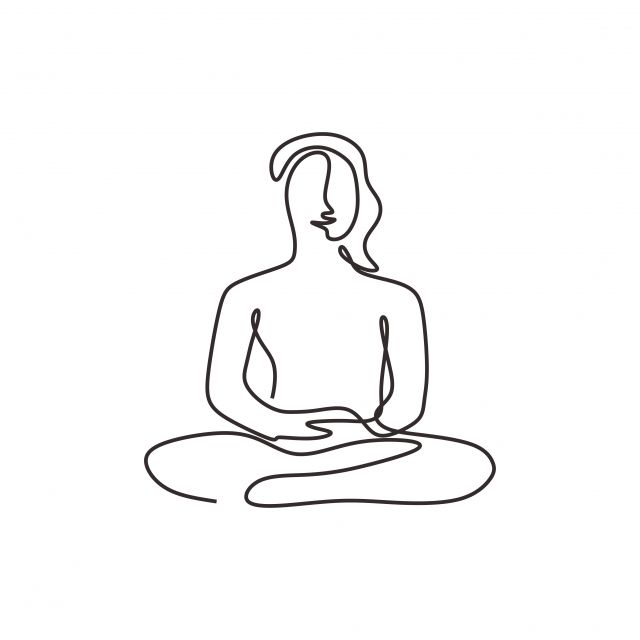
A simple practice with great results
Most of us have heard the benefits of meditation repeatedly praised. But what do we really know about how meditation works? What is meditation? What is meditation used for?
Understanding the science of meditation can make it more attractive to many people. So let's dive into this topic: How does meditation work? How does meditation work? First, we can see it as a request to understand how meditation works in the brain. Secondly, we can think of it as a question about how meditation affects our long-term health and well-being, including physical health, stress reduction, chronic pain management, improved focus, and more.
First, let's look at the brain.
How Meditation Works in the Brain
Before delving deeper into the effects of meditation on the brain, it is necessary to understand how the brain works at a basic level. Information about the world around us is collected and interpreted using neural circuits inside the brain. In fact, these are networks of neurons that interact with each other through synaptic connections. This is very important because, over time, the least used connections are cut off, and the most used ones are strengthened.
In fact, these are networks of neurons that interact with each other through synaptic connections. This is very important because, over time, the least used connections are cut off, and the most used ones are strengthened.
When you meditate, you are using some of the most beneficial connections that produce super-charged results for your health and well-being. Reusing and strengthening these connections can lead to the following positive changes:
Better body awareness
One of the goals of meditation is to become more aware of your physical body. Your task is to notice what each part of you feels - sensations in the shoulders, back, head; how your lungs feel as they expand and contract with each breath. By noticing these sensations, you will strengthen those connections that relate to how you perceive and interpret awareness of your physical body. The effect will persist for a long time.
Increased awareness
One of the most frequently cited benefits of meditation is improved concentration. Basically, when you meditate, you are exercising your brain's ability to focus on only one thing at a time. In any session, this could be your breath, a mantra, an object, or a desired emotion or sensation (such as peace). With this exercise, you can increase your focus on other areas of your life. For example, you will be able to spend your time better without being distracted by a project.
Basically, when you meditate, you are exercising your brain's ability to focus on only one thing at a time. In any session, this could be your breath, a mantra, an object, or a desired emotion or sensation (such as peace). With this exercise, you can increase your focus on other areas of your life. For example, you will be able to spend your time better without being distracted by a project.
Concentrate less on the "I"
In the brain of every person there is a center "I". Its scientific name is medial prefrontal cortex. This part of the brain is responsible for interpreting your unique perspective on life - your experiences and the emotions you connect with. Connections with the center "I" become weak after constant meditation. However, this is good because it allows you to focus less on daydreaming and thinking about what "I" did wrong, how "I" screwed up, or how "I" failed.
Regulated emotional responses
Meditation slows everything down - your thinking, reasoning and emotions.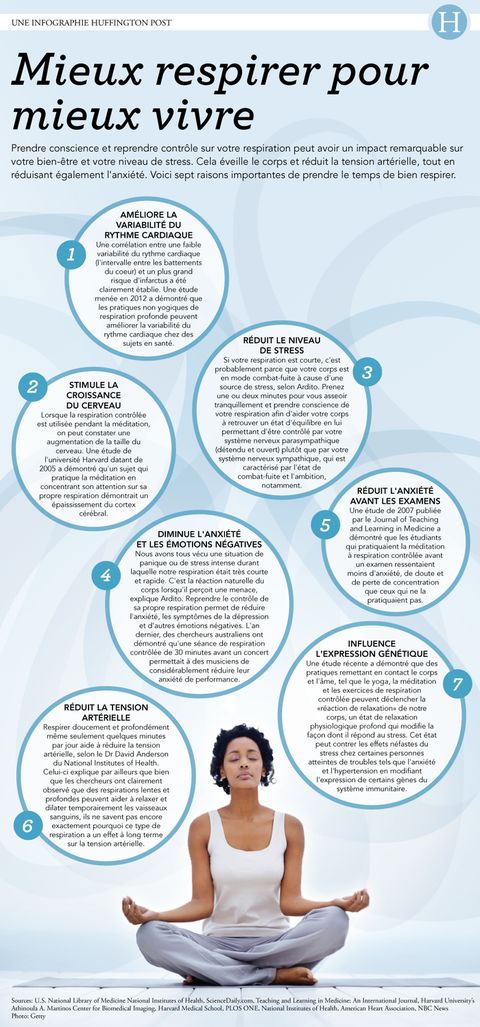 It helps you become aware of patterns that you may not have noticed before. If, for example, you begin to worry every time you remember a specific painful experience, then after some time of meditation you will be able to fix this tendency more clearly. In turn, you will be better able to control and regulate these emotions the next time they arise. Moreover, these positive effects of stress management are believed to persist over time.
It helps you become aware of patterns that you may not have noticed before. If, for example, you begin to worry every time you remember a specific painful experience, then after some time of meditation you will be able to fix this tendency more clearly. In turn, you will be better able to control and regulate these emotions the next time they arise. Moreover, these positive effects of stress management are believed to persist over time.
How meditation makes you feel better
Meditation is not evasion, it is a serene encounter with reality. - Thich Nhat Hanh
The beauty of meditation practice, as already mentioned, lies in its positive impact on all aspects of our health and overall well-being. Incorporating meditation into your daily routine will quickly lead to positive changes in your daily routine, physical and mental health. Believe it or not, the practice of mindfulness-based stress reduction, including meditation, has positively changed the dynamics for people with PTSD, irritable bowel syndrome, and ADD.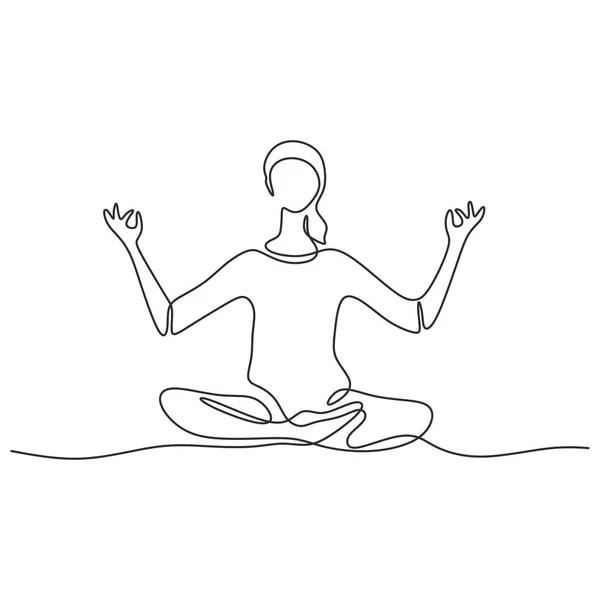
Now let's look at some of the most easily attainable benefits of meditation practice.
Slows you down
Modern life moves at an extremely fast pace, which ultimately leads to increased levels of stress, psychological distress and increased anxiety. In order to deal with and navigate the turmoil of today's reality, it is necessary to slow down and cultivate more calmness in daily life.
Since meditation itself involves slowing down, it is an excellent tool for activating more stillness and calmness. Even though meditation is an activity, it is about reversing the movement and doing the inner work by simply focusing on the present and not aiming for something. The goal is to sit still and focus on being present. When done right, meditation is the perfect remedy for those who have trouble sleeping as it helps to calm their mind before bed.
Improves the sense of focus
Every moment of a meditation session is critical. Every second of inhalation or exhalation must be approached with awareness and absolute presence. Once you have mastered this mindfulness technique as you practice, you can easily begin to apply the same principles to your daily routine and any difficult moments. With frequent practice, meditation improves your overall focus wherever and whenever you are.
Once you have mastered this mindfulness technique as you practice, you can easily begin to apply the same principles to your daily routine and any difficult moments. With frequent practice, meditation improves your overall focus wherever and whenever you are.
Meditation, especially mindfulness meditation, will train your brain to notice the little things around you and within you. Instead of being distracted by the harsh and frightening events of the past or future, you will be able to pay attention to the beauty and magnificence of the present.
Relaxes muscles
Meditation is great for cramps or muscle tension. By becoming more aware of your body, you can consciously release tension in areas that are tight or particularly tense.
Promotes positive emotions
Along with combating the negative effects of modern man, meditation can help you feel good and take control of your negative thoughts. Emotional regulation is an important aspect of meditation, and consistent practice has been shown to increase levels of serotonin, the so-called happiness hormones.
Try meditation yourself
Here are some tips to help you get started with meditation.
1. Start small.
It is not necessary to start meditating for two hours every morning and every evening. If you're starting out on your own, start meditating for just five to ten minutes daily. Alternatively, start with a meditation instructor. The best meditation instructors will work with your personal needs in mind and tailor your meditation session to your unique goals. To further level up your meditation training, you can start meditating with a teacher for longer periods of time. The great thing is that you will immediately notice positive changes in your life.
2. Don't be too hard.
Meditation is a journey, not a destination. Don't worry if you don't get to meditate right away. Don't worry if you're only doing five or ten minutes. Don't worry if during the first few meditations you feel insecure or uncomfortable, or if your mind wanders. All this is part of the learning process.
All this is part of the learning process.
3. Turn it on everywhere.
You don't have to devote your life to meditation. You can practice it anywhere. Mental attention, for example, is a relative of meditation. The purpose of meditation is to focus all your attention on the present moment, no matter what is happening. Thus, the technique of mindfulness is applicable anywhere and anytime. Whenever you feel your mind wandering during a task, find yourself in a stressful situation or in fight or flight mode, go back to what you practice during meditation and apply it in real life.
Meditation: Frequently Asked Questions
How do you meditate on something?
Guided meditations and image-based meditations often force you to focus on something. For example, you can focus on a mantra (a personal "slogan" that you repeat during meditation). Or you can focus on visualizing a peaceful setting, such as a beach scene or a beautiful mountain view. You can also meditate on a thought or feeling, such as "peace", "compassion" or "calmness".
You can also meditate on a thought or feeling, such as "peace", "compassion" or "calmness".
What are the different types of meditation techniques?
There are many different types of meditation. Below is a list of some of the more common types:
-
Sitting meditation
-
Mindfulness Meditation
-
Dream Meditation
-
Transcendental Meditation
-
Mantra Meditation
-
Meditation in Nature
-
Movement Meditation
-
Compassion Meditation
-
Love Kindness Meditation
-
Intelligent Meditation
-
Focused Attention Meditation
Meditation is not evasion, it is a serene encounter with reality.
- Thich Nhat Hanh
ANAHAN MEDITATION RESOURCES
MEDITATION WIKI
Meditation on chakras
Meditation techniques
Meditation of body scanning
Managed anxiety
Meditation for children
morning meditation
Blogs about meditation
How Meditation helps to cope with a stress of
, how meditation works meditation.
Meditation music
Gifts for meditation
Links
How does mindfulness meditation work?
The Power of Meditation Nerve Blog | Blog Archive | Boston University
Meditation's effect on emotions has been shown to persist
How to change your life through meditation: scientific arguments and practice
Health /Unsplash
Author Ekaterina Tikhonova
May 21, 2021
Studies have shown that regular meditation has a direct impact on happiness, helps to stay in good shape and cope with stress. Understanding how meditation is useful from the point of view of science and how to approach it
Yongey Mingyur Rinpoche, author of The Buddha, the Brain and the Neurophysiology of Happiness, is one of the popularizers of Tibetan meditation. For many years he has been involved in brain research during meditation, finding more and more evidence of its usefulness for each of us. Here's what we know about it so far.
Here's what we know about it so far.
Meditation is various psycho-physiological practices (religious or healing) that allow you to make your consciousness clearer, understand yourself and control your mind. Depending on the technique, meditations are based on concentration and/or willpower. Initially, the practice of meditation came from Hinduism. It occupies an important place in yoga. Today, however, meditation is increasingly spoken of without an esoteric component - as a means to train your mind and become calmer.
Advertising on RBC www.adv.rbc.ru
There are over 3,000 scientific studies on the benefits of meditation. They involved both Buddhist monks who have devoted thousands of hours to meditation, and beginners who practice meditation for 15 minutes a day. The results recorded positive changes in most of the subjects. And here are some.
- Stress reduction
For this, people usually begin to meditate. A study of 3,500 adults showed it worked. When our bodies are exposed to sudden stress or threat, the brain responds with a fight-or-flight response. It is caused by a surge in the hormones adrenaline and cortisol, which leads to sleep disturbance, depression and anxiety, increased blood pressure, fatigue and confusion. Meditation gives you the opportunity to step back, recognize stress and choose how to respond to it. For example, it could be a regular relaxation practice that allows you to act rationally even under stress.
A study of 3,500 adults showed it worked. When our bodies are exposed to sudden stress or threat, the brain responds with a fight-or-flight response. It is caused by a surge in the hormones adrenaline and cortisol, which leads to sleep disturbance, depression and anxiety, increased blood pressure, fatigue and confusion. Meditation gives you the opportunity to step back, recognize stress and choose how to respond to it. For example, it could be a regular relaxation practice that allows you to act rationally even under stress.
- Anxiety control
There is a part of our brain responsible for fear. This is the amygdala, called the amygdala, which works like an alarm, looking for sources of danger around. She kept the ancient man alive by catching rustles in the forest or aggressive fellow tribesmen. For a modern person, it often works as a "false call", awakening unreasonable anxiety. Research has shown that amygdala activity decreases when a person is in a meditative state.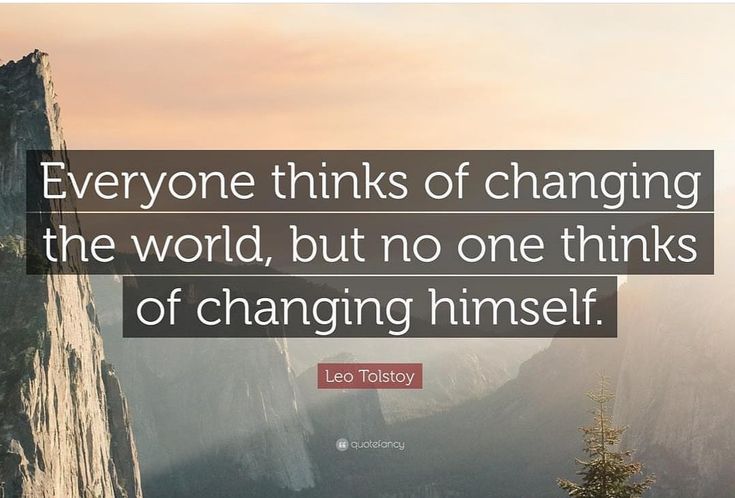 These data were obtained both in experiments with people without experience in meditation, and in trials with both healthy people and those suffering from chronic anxiety. The effect is comparable to the action of drugs, but does not cause side effects. Regular practice reprograms the fear center, reduces anxiety and symptoms of anxiety disorders and panic attacks.
These data were obtained both in experiments with people without experience in meditation, and in trials with both healthy people and those suffering from chronic anxiety. The effect is comparable to the action of drugs, but does not cause side effects. Regular practice reprograms the fear center, reduces anxiety and symptoms of anxiety disorders and panic attacks.
© Manuel Breva Colmeiro/Getty Images
- Emotional recovery
Our brain tends to emotionally color or "stick" to situations and problems. For example, if a person has troubles at work, he can transfer them to family life. Conversely, troubles in personal life can be reflected in work. Meditators have the ability to not "stick". To see an emotion, a problem, to realize it and not fall into a trap.
Scientists attribute this to a decrease in the production of substances called cytokines. They are released in response to stress, affect mood and often cause depression. In the brains of those who practice meditation, connections appear that increase empathy and the ability to rationally assess problems.
In the brains of those who practice meditation, connections appear that increase empathy and the ability to rationally assess problems.
Research shows that meditation is as effective as antidepressants! Therefore, for people suffering from depression, it is increasingly being prescribed as an alternative to drug treatment.
- Raising awareness
Already in the eighth week of regular meditation, practitioners form their "unique brain" with well-developed areas. These areas are primarily associated with awareness and memory. Scientists are seeing an increase in the thickness of the hippocampus, which increases the brain's ability to learn and remember new material, as well as regulate its emotions. It used to be thought that mindfulness is the effect of long reflection and concentration on oneself. It is now clear that during meditation there are physical changes in the brain that help develop this skill.
- Increasing mindfulness
Problems with concentration are not only found in children, attention deficit disorder has been diagnosed in millions of adults. One of the main benefits of meditation is improved focus and concentration. Like sports training, daily meditation increases the power and endurance of attention. Two weeks of practice has been found to increase attention scores by 16%. Thanks to meditation, cognitive skills at work quickly develop - and we better concentrate on the tasks at hand.
One of the main benefits of meditation is improved focus and concentration. Like sports training, daily meditation increases the power and endurance of attention. Two weeks of practice has been found to increase attention scores by 16%. Thanks to meditation, cognitive skills at work quickly develop - and we better concentrate on the tasks at hand.
- Prevention of brain aging
Lost my keys, can't remember my name, can't solve a simple math problem - as we get closer to middle age, we face more and more problems like this. The decrease in mental abilities is associated with the loss of volumes of gray matter - brain neurons responsible for memory and learning. This is called cognitive decline associated with aging. For many years, scientists thought this decline was inevitable, but research over the past two decades has shown that the adult brain changes throughout life. This is a phenomenon known as neuroplasticity.
Regular meditation increases the neuroplasticity of the brain, maintains and even increases the concentration of gray matter. The brains of people over the age of 50, who constantly practice meditation, “look” seven years younger.
The brains of people over the age of 50, who constantly practice meditation, “look” seven years younger.
© fizkes/shutterstock
- Sleep Improvement
Meditation helps you to relax and not dwell on thoughts that prevent you from falling asleep. This practice activates the area of the brain responsible for the transition to deep sleep. Thanks to it, we fall asleep faster and get better quality sleep. When the sleep characteristics of the two groups were compared (one practiced meditation, the other did not), it became clear that the participants who meditated fell asleep faster, their sleep was deeper and longer compared to those who did not meditate.
- Pain control
Meditation reduces the perception of pain in the brain. It complements medical treatment of chronic pain or physiotherapy. Research confirms that mindfulness calms the brain centers responsible for pain, and over time, these changes take root and change the structure of the brain itself in such a way that patients no longer feel pain as intensely as they used to. Polls show that they stop noticing it.
Polls show that they stop noticing it.
Clinics prescribe meditation to help patients cope with the pain of heart disease, diabetes and arthritis. It is also used to relieve migraines, chronic fatigue, and even multiple sclerosis.
Most researchers agree that eight weeks of daily sessions of 10-12 minutes is enough to feel the positive effects of meditation. Experienced practitioners recommend meditating in the morning or immediately after waking up, when the brain is not yet preoccupied with solving a large number of problems.
It is not necessary to meditate while sitting at home. A simple breathing practice is available anytime, anywhere. Focusing on the breath is the most common approach to meditation. The main thing is to focus on the process of inhalation and exhalation. If thoughts and emotions come during practice, there is no need to block them. Look at them from the side, like a boat passing you on a river, and continue to focus on your breath.
- Sit in a relaxed position with your back straight.





